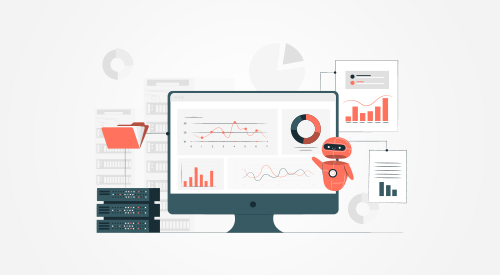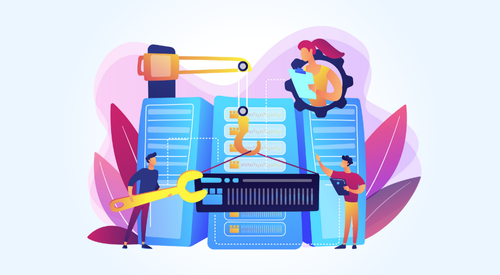

As the volume of data continues to grow, it is increasingly difficult to store and manage data stored in various silos. Data lakes are a great way to manage disparate data. Yet building a data lake is not as simple as throwing rocks in a lake. Here, we will look at how Niveus brings the best practices in building data lakes and how a data lake can help your business.

The Data Lakes Market is expected to grow rapidly in the next few years. In 2020, it was valued at USD 3.74 billion, and it is estimated to reach USD 17.60 billion by 2026. This growth is attributed to the increasing need for storage and analysis of big data.
According to a survey, a third of data scientists are occupied with basic operations such as ETL, data cleaning, and basic data exploration, rather than focus on real-time analytics or data modeling, thereby reducing efficiency. Data modernization solutions such as IoT devices are being adopted at a rapid pace, with government initiatives like building smart cities helping to drive their deployment. This means that businesses need to pay close attention to how they are building their data lakes. GCP best practices in building data lakes can make the process simpler and more effective for businesses.
Data lake best practices
Data lakes are still a relatively new idea and as such don’t have a lot of history to go by. This means that there is quite a lot of room for interpretation on what are the best practices to go about while building a data lake. Here are a few things to keep in mind.
- It’s not a data warehouse:
The first thing to say about building a data lake is that it needs to be done differently to how a data warehouse is designed. Identifying whether you need a data lake or a data warehouse or maybe both, is necessary. A data warehouse is designed to be filled with transactional data and analyzed in real-time, whereas a data lake is designed to be filled with all sorts of different data and analyzed at some point in the future.
- Build with future in mind:
Your data lake’s scalability to handle current as well as future data projects need to be noted. Ensure that your data lake is wide in scope and demand greater flexibility, scalability, and ease of management. Ensure that your developer team on hand is adequate and adept to predictively build your data lake. Ensure that there are the right processes in place to manage, cleanse, govern all your data sources efficiently and cost-effectively without affecting performance.
- Build with outcome in mind:
Identifying how and where a data lake fits into your core processes is key to successfully leverage one. The use cases, the required architecture and technology, and the kind of analytics support needed are to be thoroughly mapped before building a data lake.
- Ensure data accessibility and data quality:
Bad data is just two steps from disaster for business analysis. Having access to data, and the right data at that, is crucial to make strategic decisions. Data lakes, by storing data of any type- whether structured or unstructured would require the right tools and data engineers to sort and process the data for better results.
- Incorporate versatility:
Keeping your data lake flexible is a necessary step to ensure that your data is agile and able to move between environments. To allow your data lake to grow with your organization, keeping multi cloud capabilities a viable option saves time and effort for the future.
Data lakes – case study (from manufacturing to digital startups)
Here’s how 4 of our top customers have benefitted from our data lake solution –
- A leading automotive client is leveraging data lake to analyze aggregated data for each vehicle, as well as leverage a scalable API layer with monitoring and easy integration, with real time information such as trip details and vehicle health
- An e-commerce solution provider powering an army of point-of-sale(POS) companies, leveraged our data lake solution as a part of their AWS to GCP migration, to store, analyze and generate reports from their vast sea of data
- A multinational conglomerate, with the implementation of data lake, now have a customer 360 focus and personalization experience, with access to data from different sources across their vast organization in a single place for real-time analysis
- Under our POC, one of India’s oldest media and entertainment organization analyzed their data on music tracks from their different partners in a centralized, scalable data lake to generate insightful reports
Building the data lake is a must-have for a data-driven organization. If you’re looking for data lake best practices, our cloud experts can help you with the best Niveus has to offer. To know how, get in touch with us at biz@niveussolutions.com











